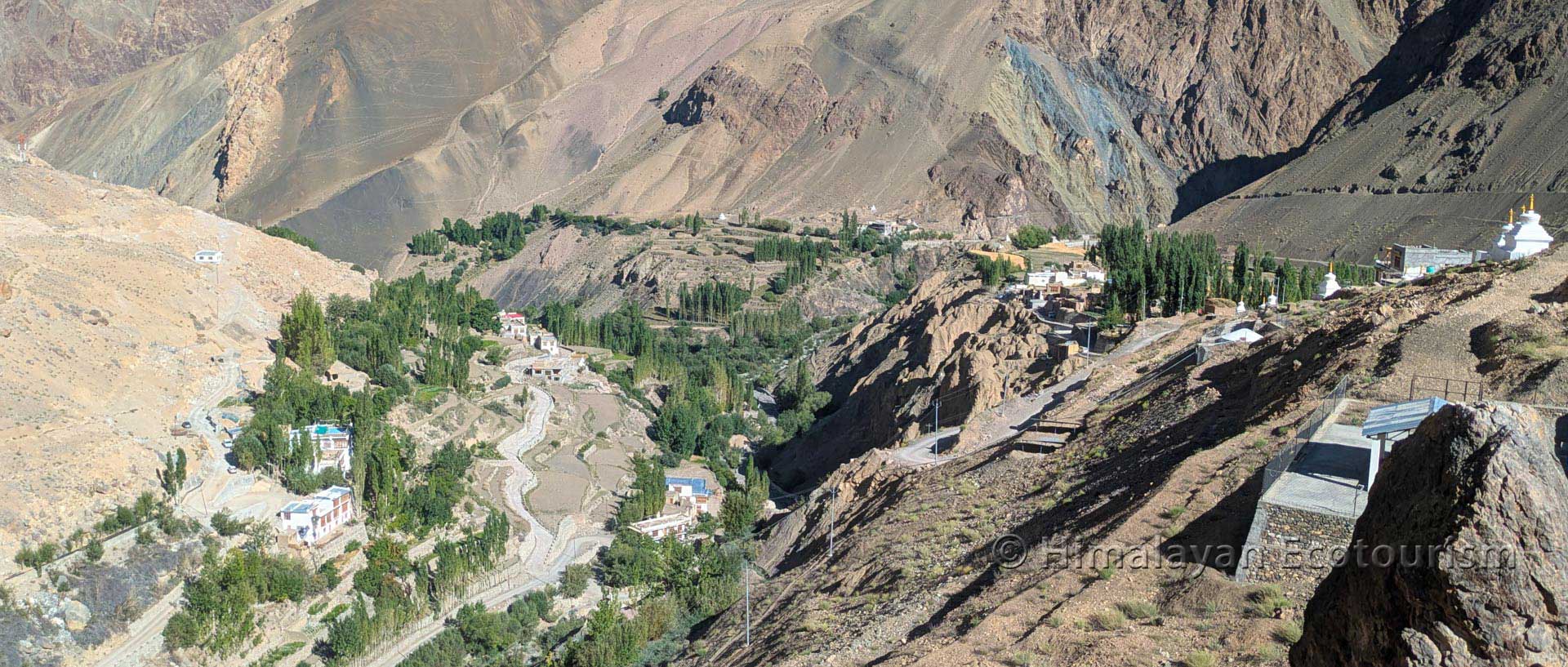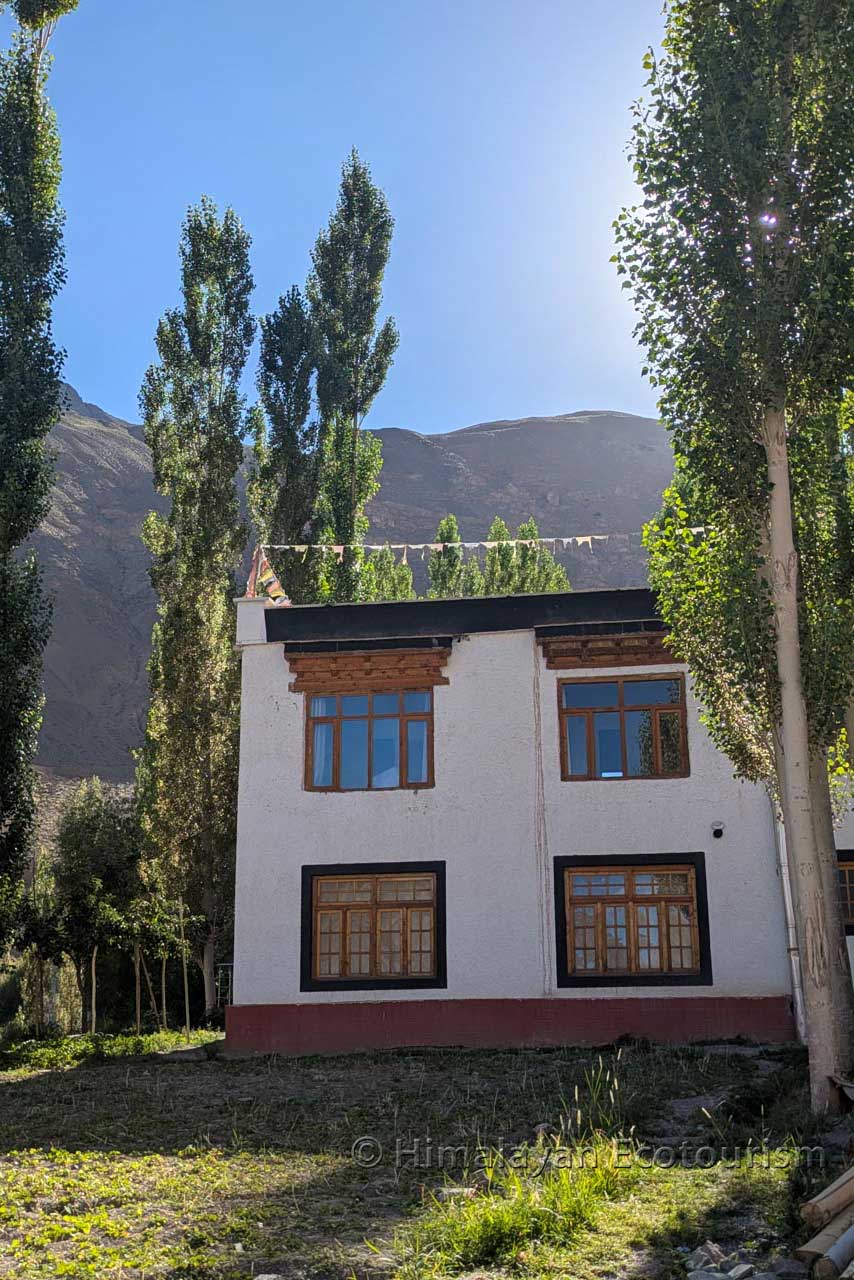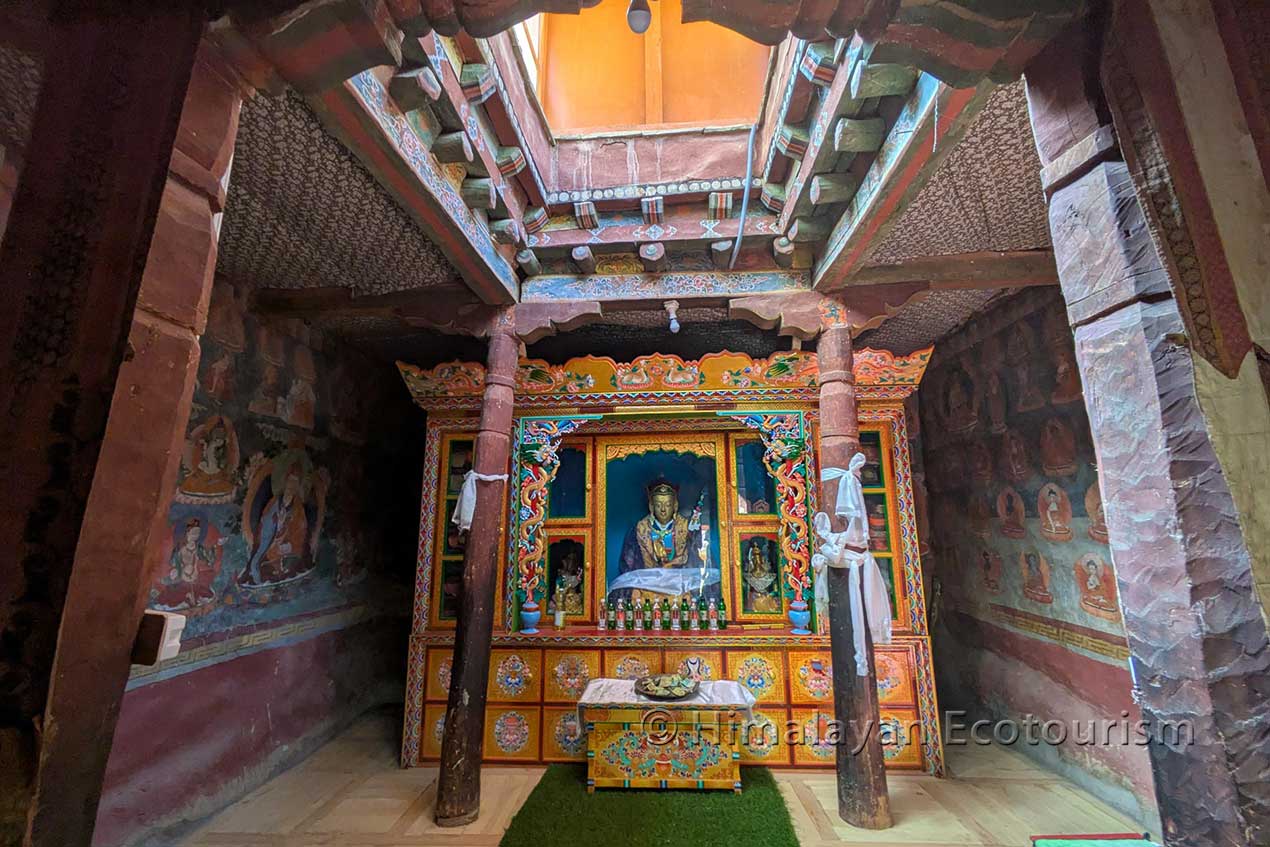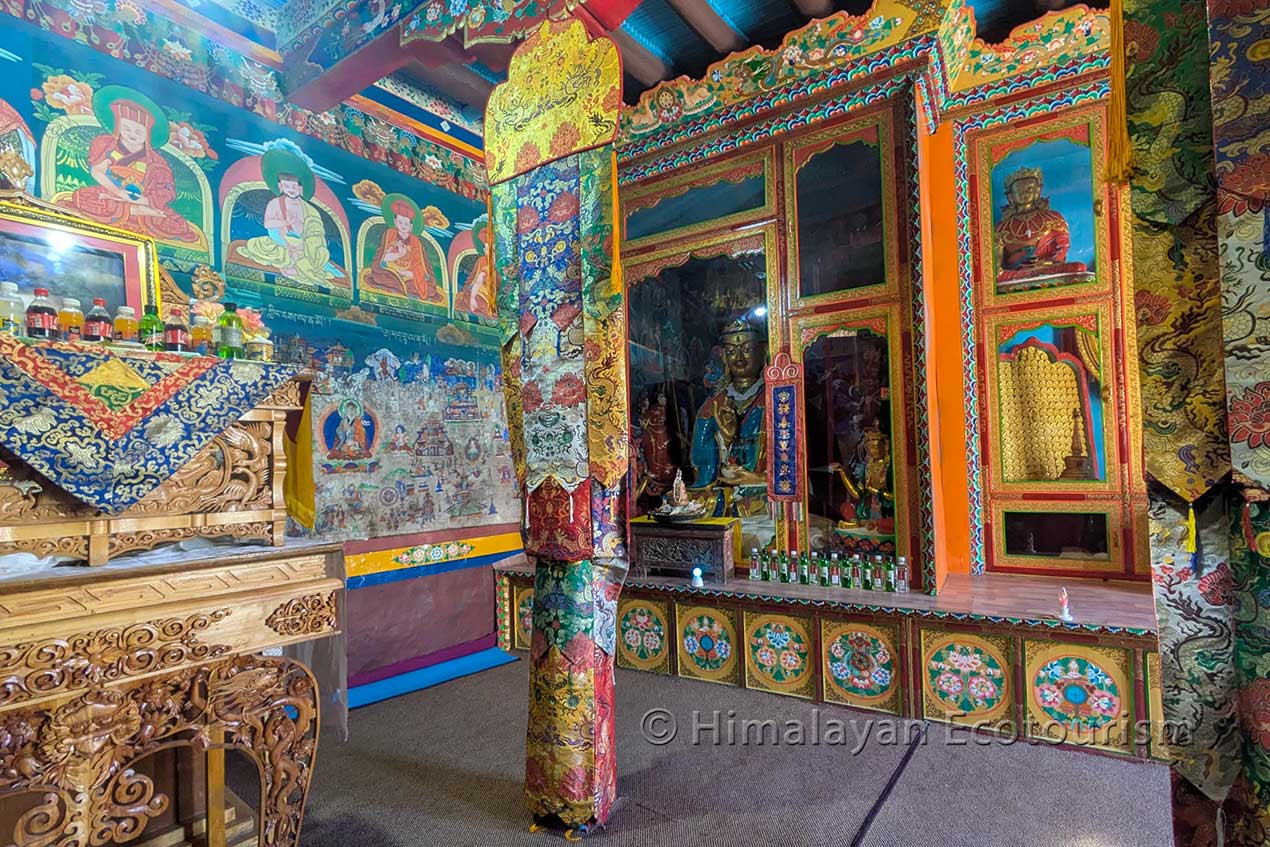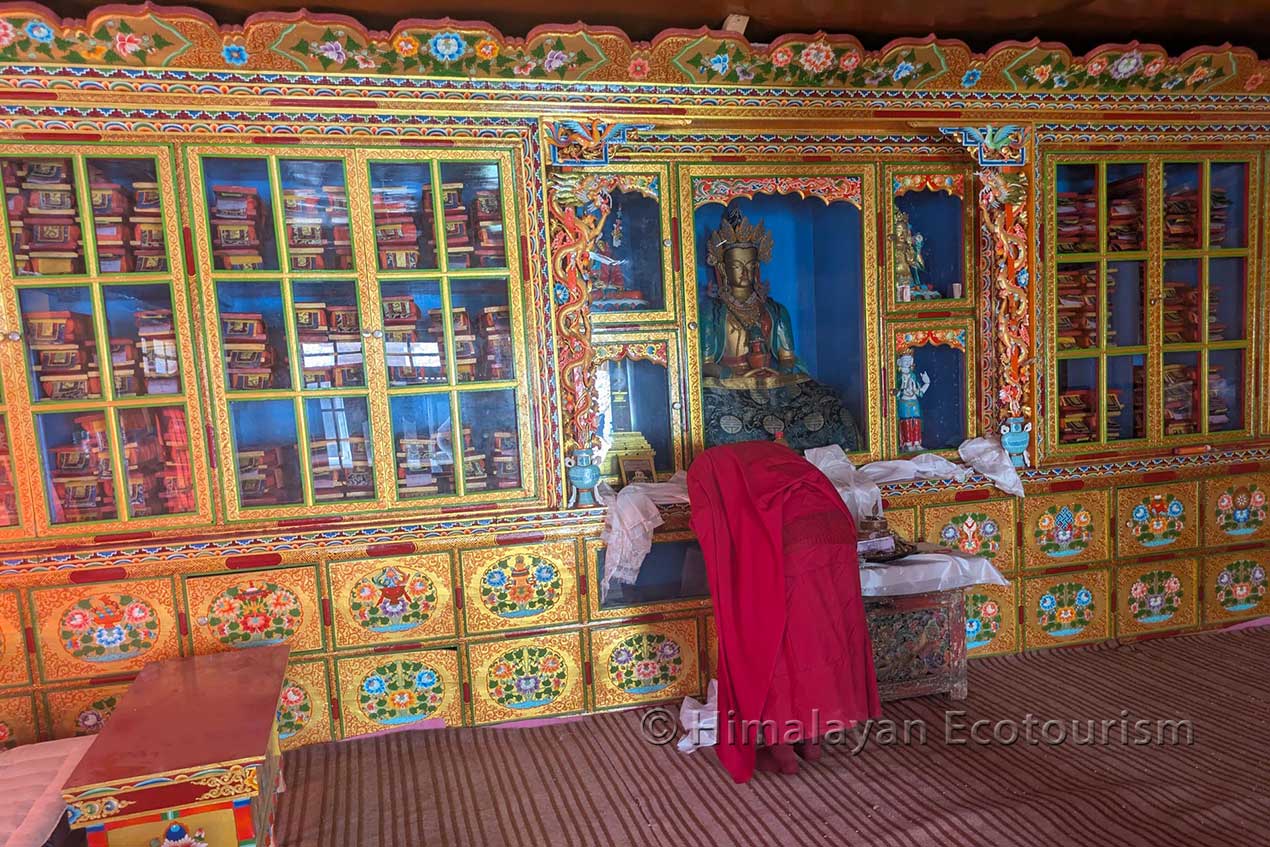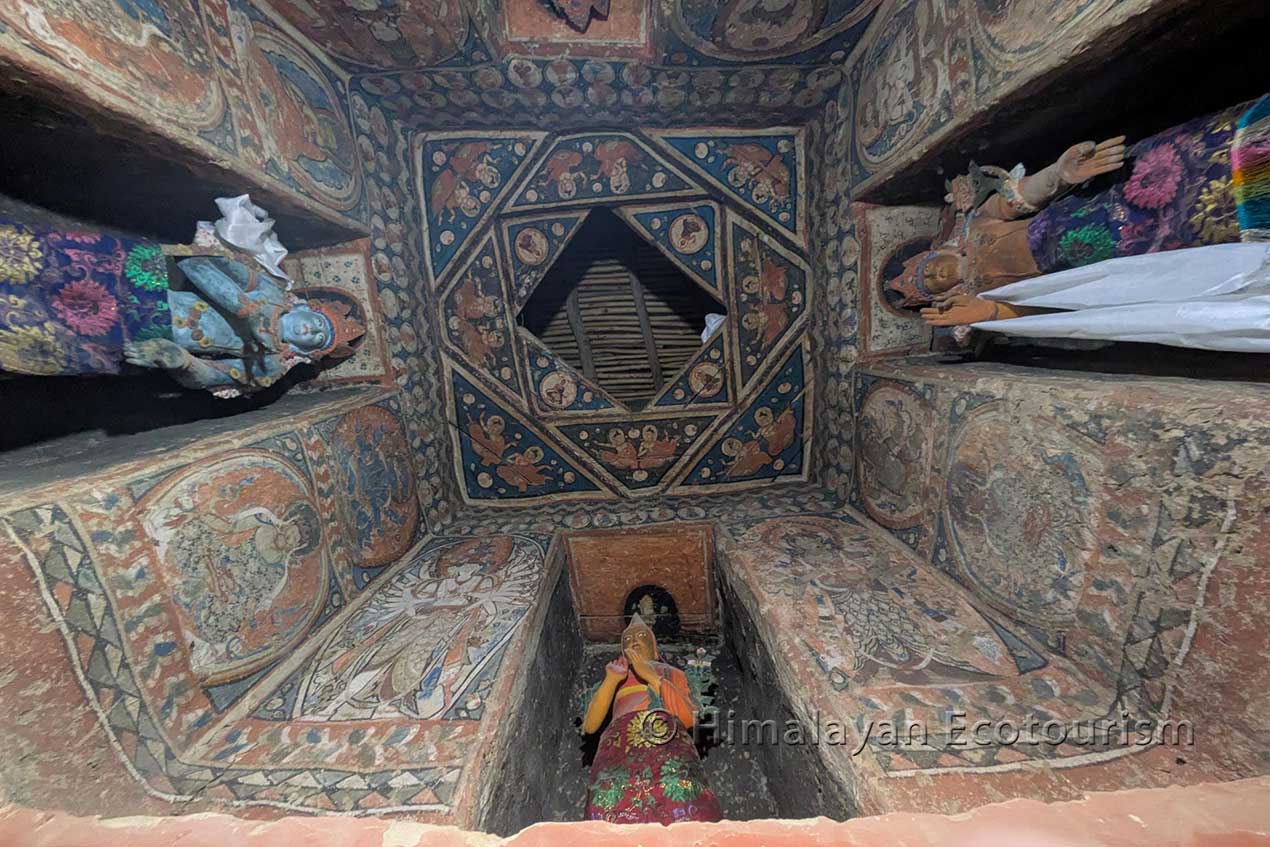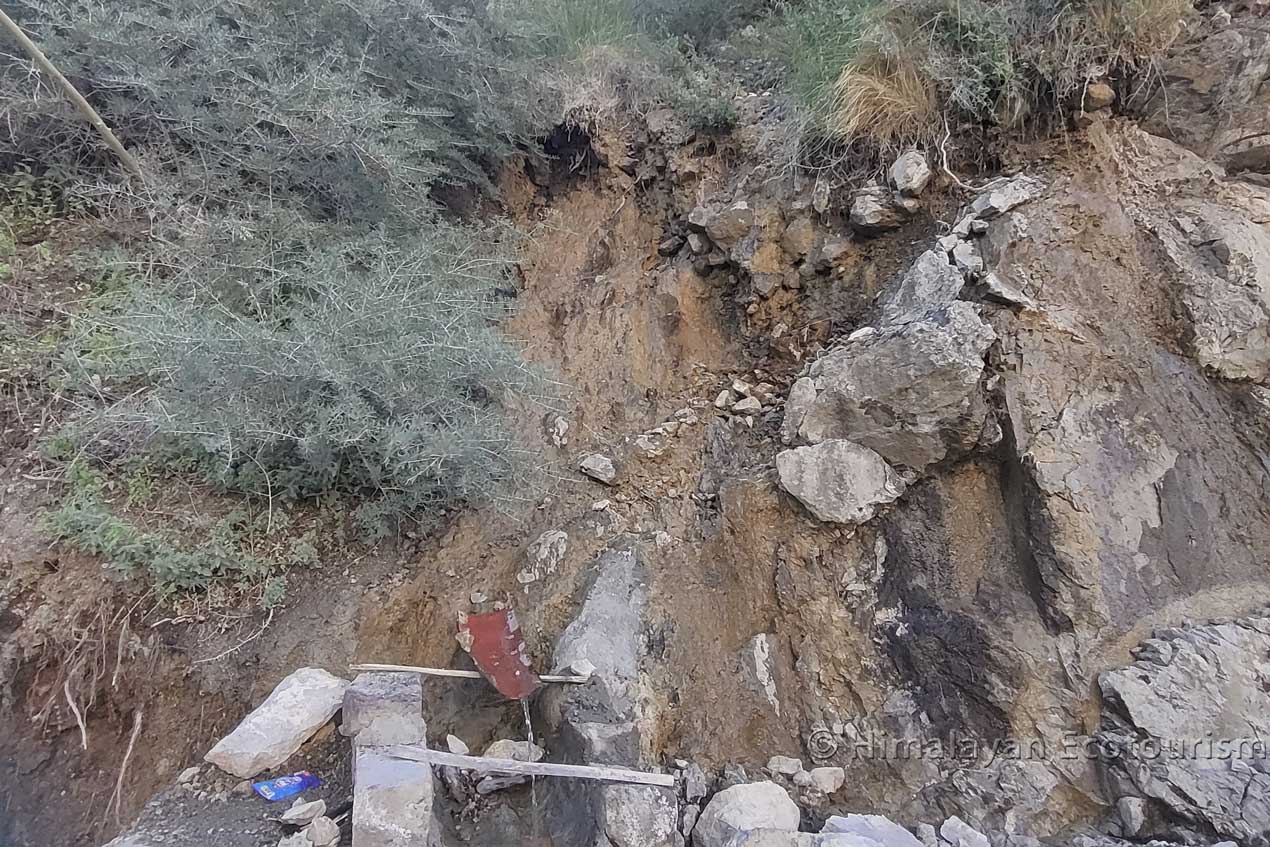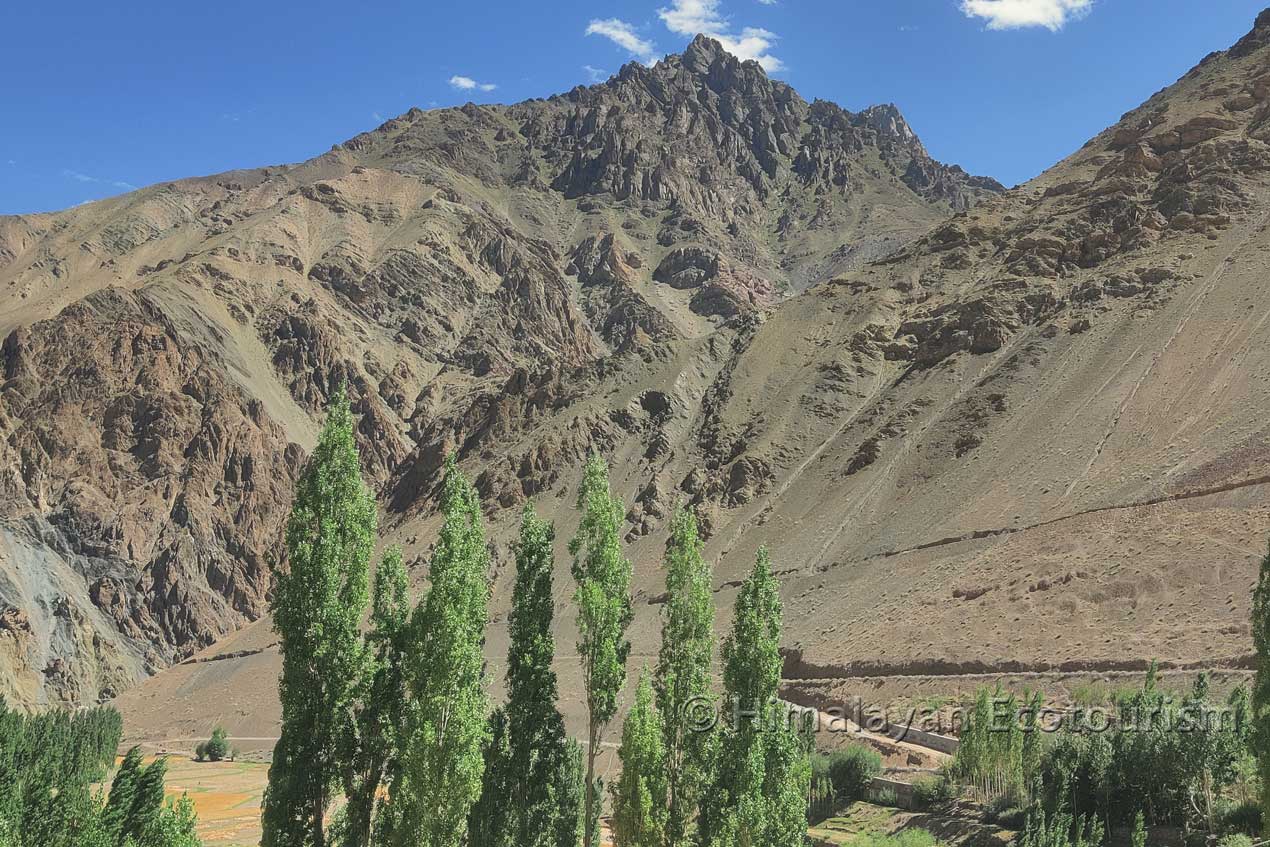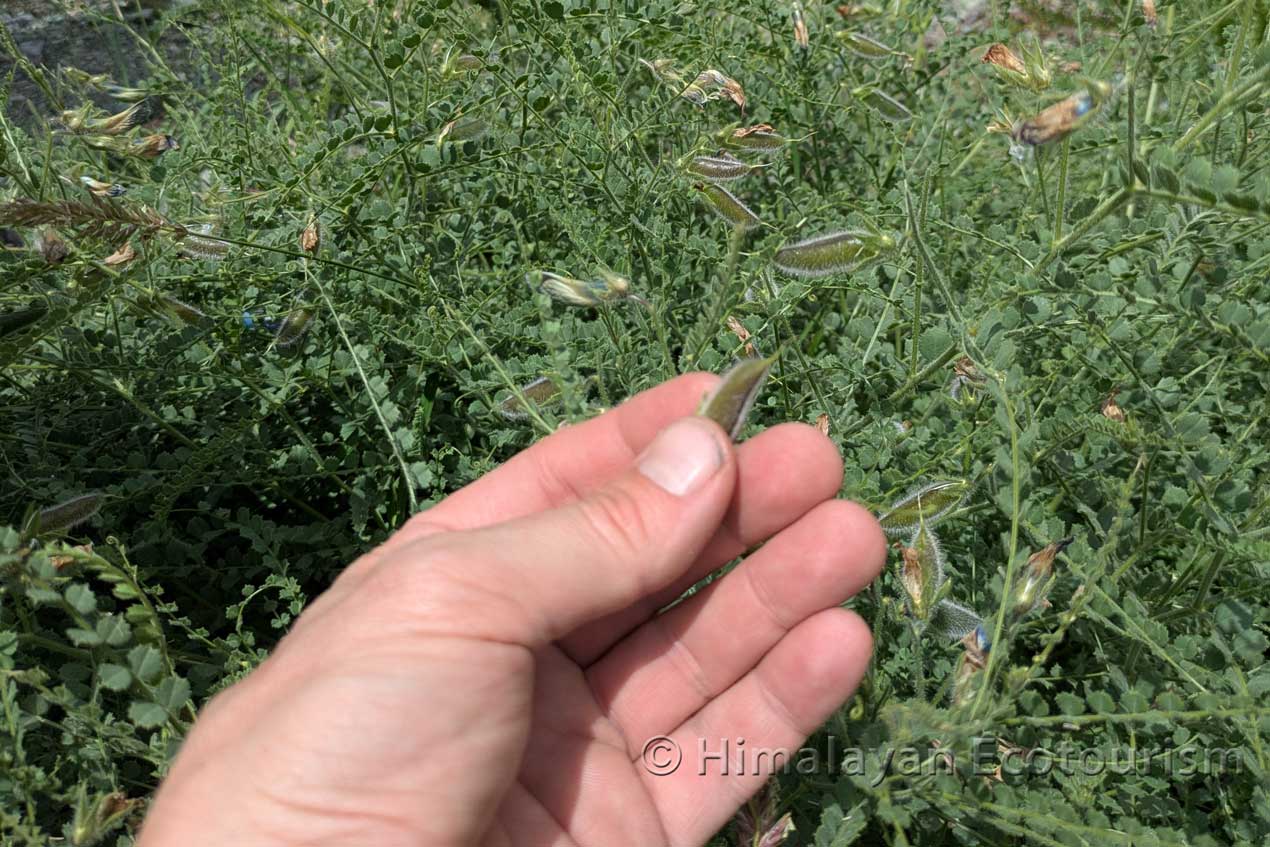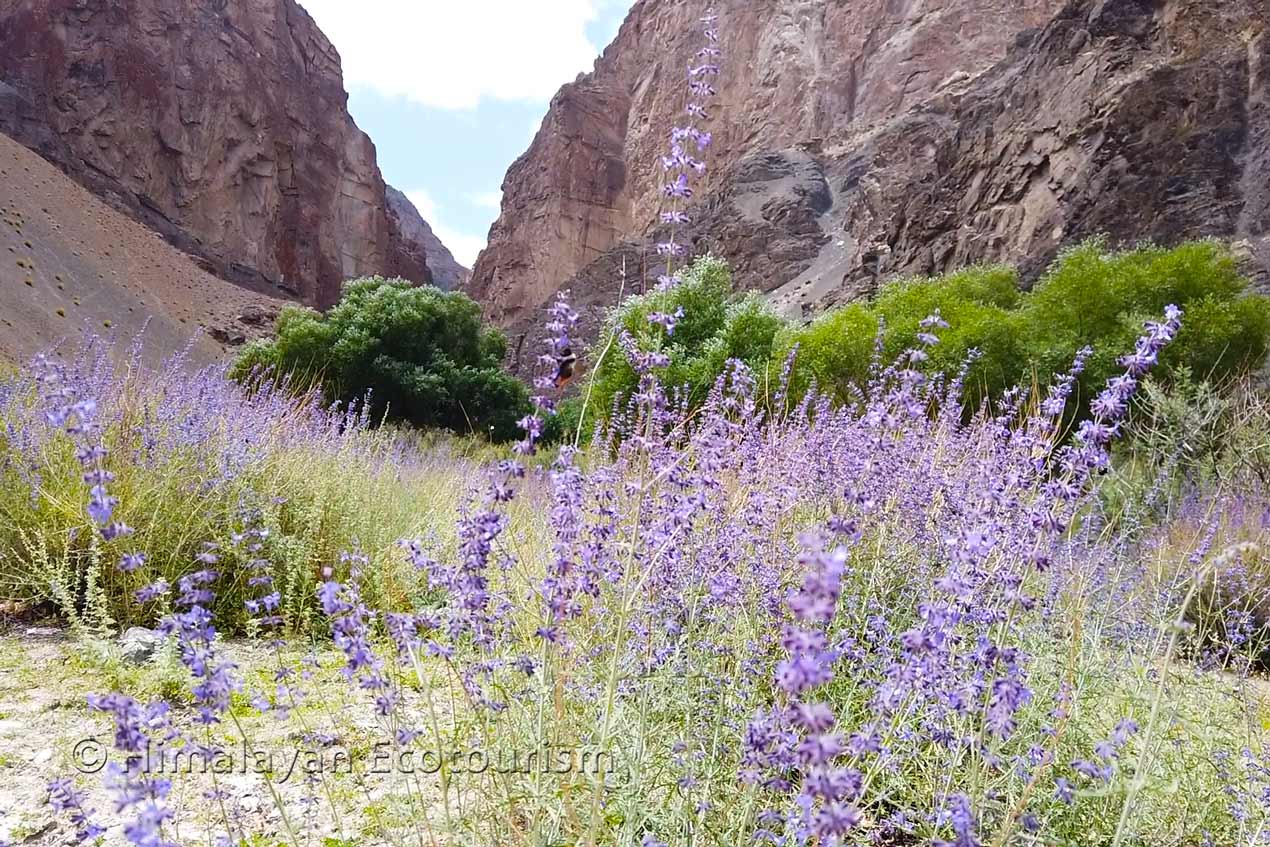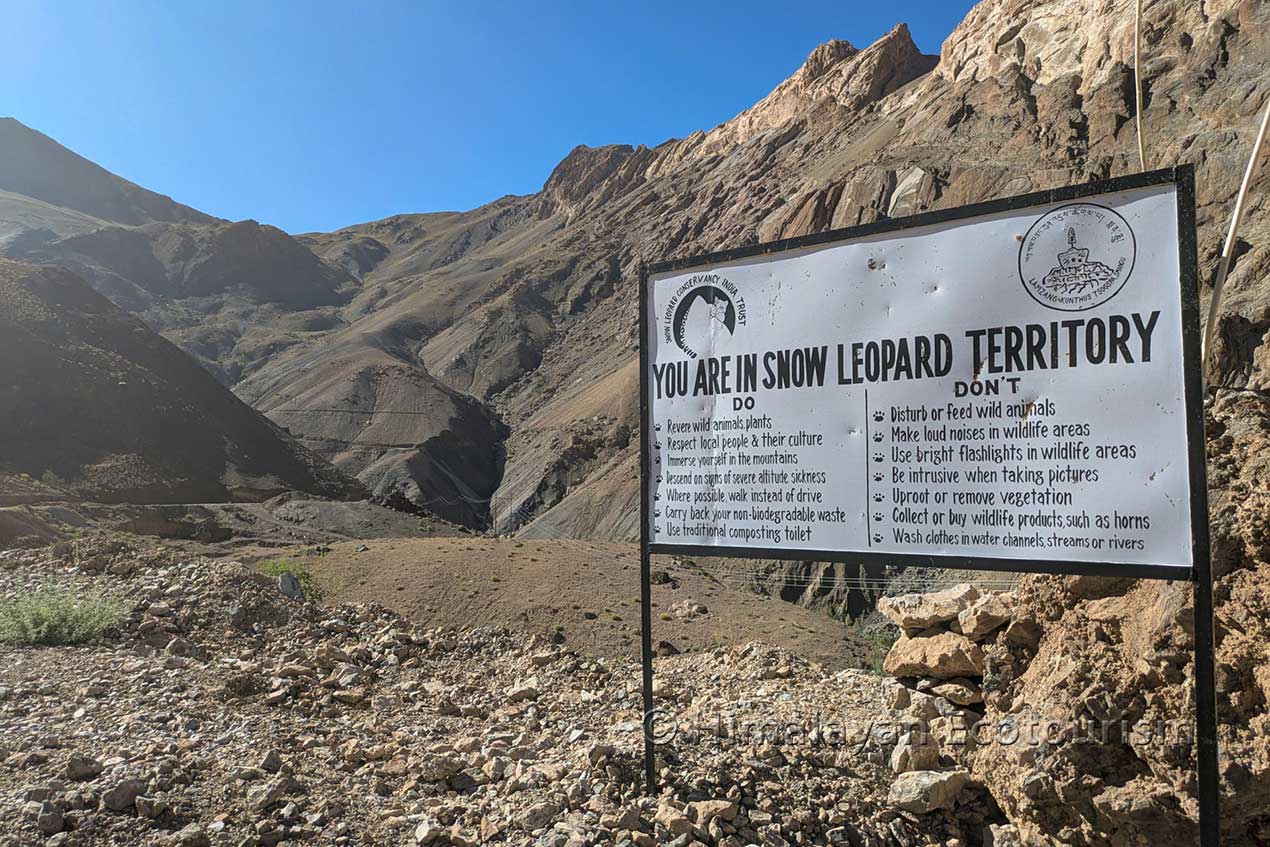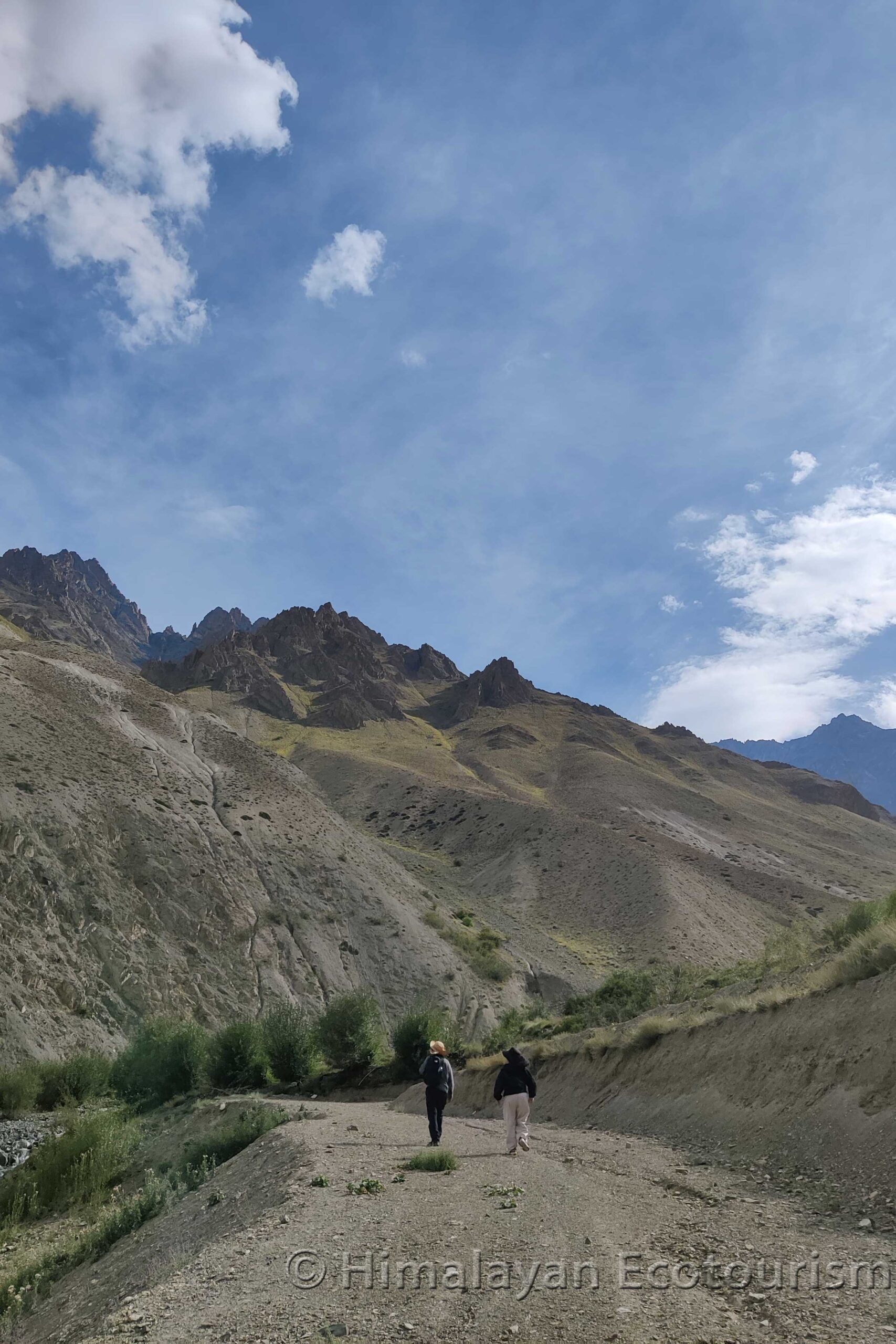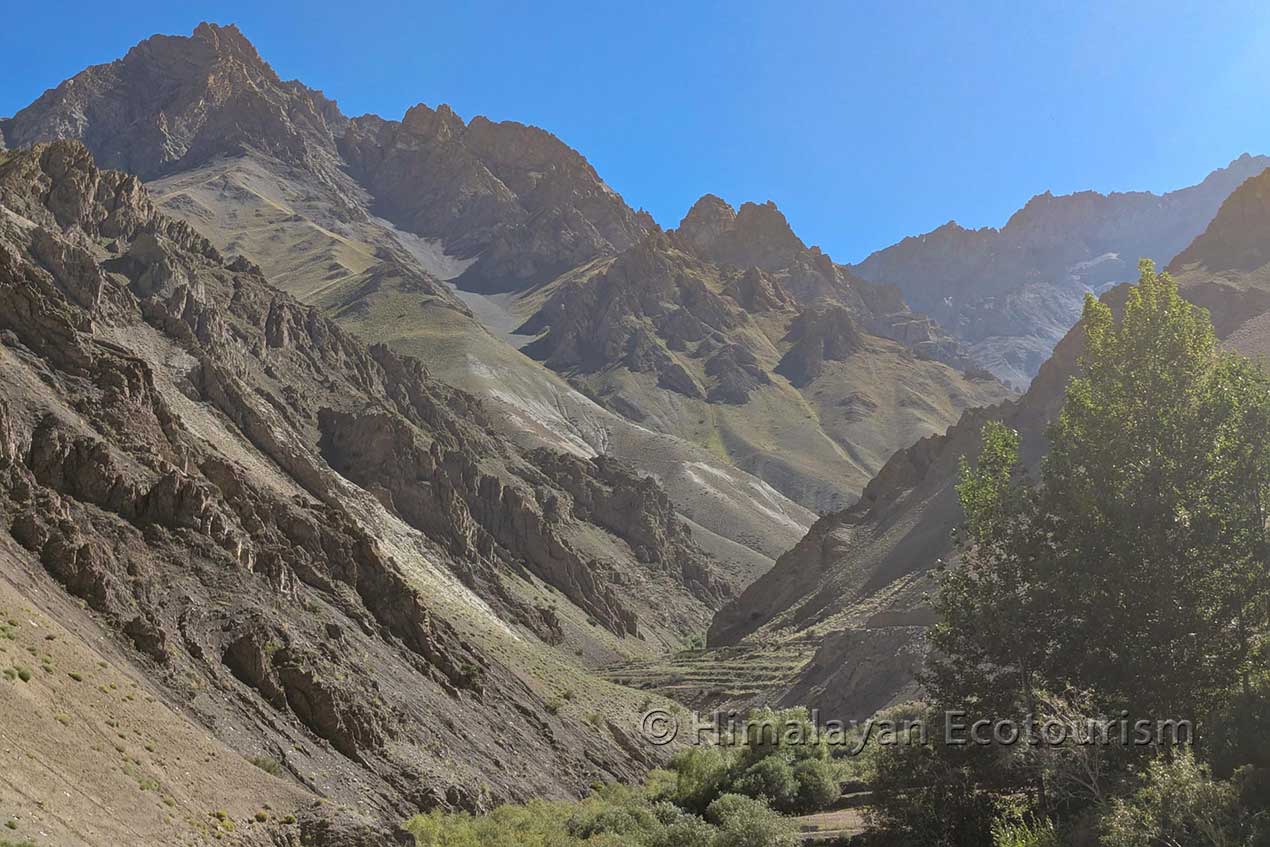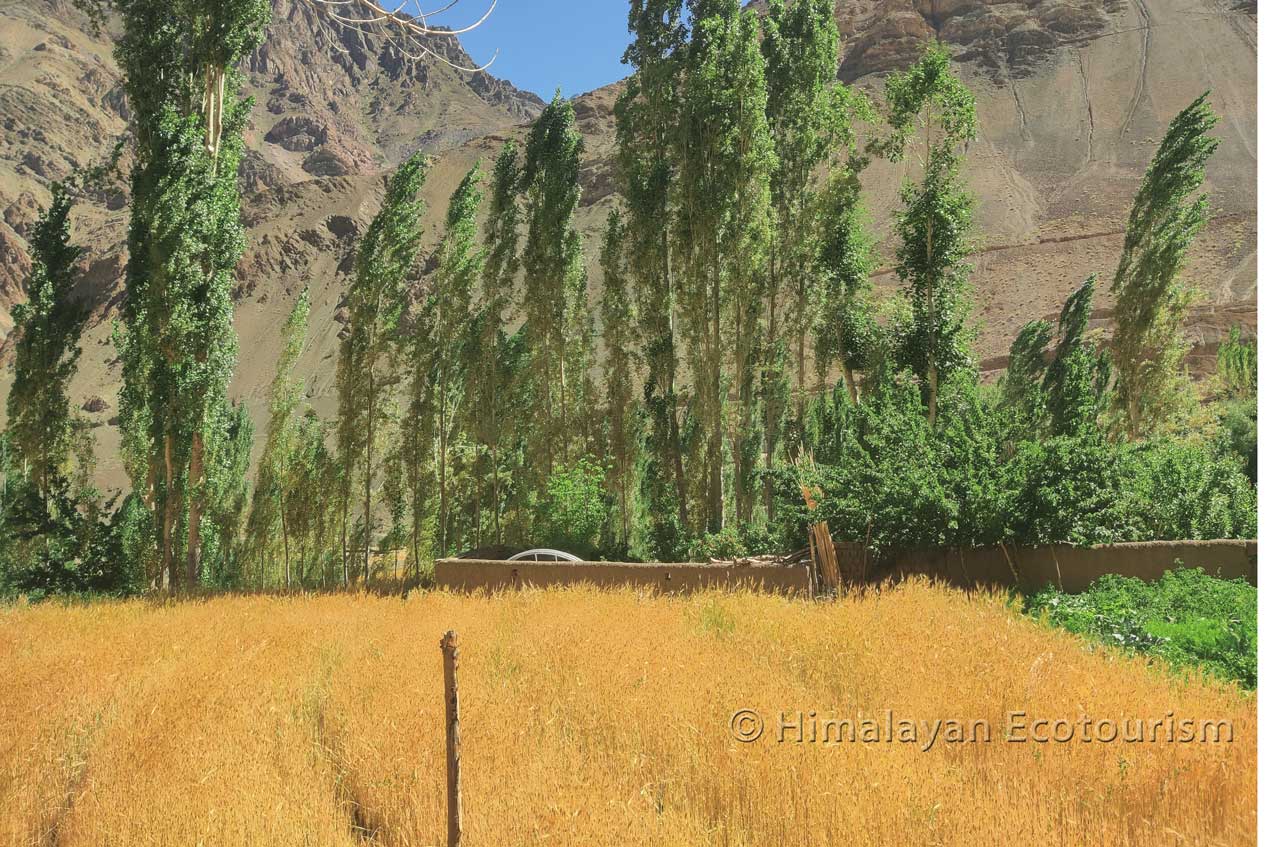Mangyu Village – A Himalayan Haven of Healing and Heritage

Discover Ladakh’s Timeless Wisdom, Wellness, and Traditions
Cradled amid the hilly contours of Ladakh, Mangyu is a quiet and far-flung village where lavender valley blooms, medicinal herbs flourish, rare wildlife thrives, and an ancient monastery whispers the timeless stories of Ladakh. Away from the noise of modernity, Mangyu is also one of the region’s best-kept secrets for stargazing, where crystal-clear skies unveil the brilliance of the Milky Way.
Despite being little known to travelers, Mangyu is a place of profound historical, spiritual, and natural significance. Its ancient monastery, believed to be an alternate seat to Alchi Monastery and associated with Guru Padmasambhava, stands as a silent witness to Ladakh’s rich Buddhist heritage. The surrounding summer pastures still echo with stories of the region’s pastoral past, preserving traditions that have endured for centuries.
Today, Mangyu is gradually embracing responsible tourism with the support of Heco. Through initiatives to develop homestays, improve hospitality, and promote sustainable practices, visitors are invited to experience the warmth of authentic Ladakhi life while helping safeguard the village’s cultural and natural heritage for the future.
About Mangyu (Mangue)
The name Mangyu translates to “source of medicine”, a fitting identity for a village renowned since ancient times for its abundance of medicinal plants. To preserve this age-old tradition of collecting medicinal herbs and to pass down ancestral knowledge to younger generations, the village, along with Tingmosgam and Tia village, hosts an annual celebration called the Sham Festival.
This festival highlights Mangyu’s rich heritage of traditional medicine and has even drawn eminent guests, including the Director of Sowa-Rigpa.
Mangyu village counts around 53 households with the total population of about 400 people.
The boundaries of Mangyu stretch further to include the nearby villages of Sapta and Zum.
Farming remains central to the villagers’ livelihood, where barley, wheat, vegetables, apples and apricots are grown using traditional irrigation techniques.
Water for the village is supplied by melting glaciers and freshwater springs, which sustain both the people and their fields. During Spring season, the village depends on a water reservoir that preserves water for everyday use and irrigation, until the melting glaciers replenish the streams in summer.
The village has a government school and a few homestays where visitors can experience authentic Ladakhi hospitality. For nature lovers, there are plenty of day-hike opportunities around the village as well as a scenic multi-day trek attracting trekkers across the world. With support from Heco, new projects are being introduced to develop homestays, improve visitor experiences, and highlight Mangyu’s rich heritage.
How to reach Mangyu (Mangue)
Situated in the jagged terrain of the Leh district, Mangyu is a remote Himalayan village located about a two-hour drive from Leh. The journey begins along the scenic NH-1 highway and passes through Nimoo, Basgo, Saspol, and Alchi before taking a detour beyond Uleytokpo which leads to Mangyu. The village remains untouched by modern distractions with no internet connectivity and allowing visitors to truly disconnect.
To access the area, travelers must obtain a permit to cross the Phyang check post. The diversion to Mangyu is marked by a metallic bridge spanning the Indus River, after which the road meanders alongside a sparkling tributary flowing down from the village. As you ascend, the route winds through spectacular gorges and scenic rock formations, gradually revealing the hidden charm of Mangyu.
Things to do in Mangyu village
Mangyu Monastery
Set in a peaceful part of Ladakh, the Mangyu Temple Complex is one of the region’s oldest Buddhist heritage sites, dating back to the late 12th or early 13th century. Local traditions link its origin to the legendary Lotsawa Rinchen Zangpo, the “Great Translator,” whose efforts were instrumental in shaping Ladakh’s Buddhist identity.
The complex is home to a fascinating ensemble of sacred structures, including the Sakyamuni Temple (Chenrezig Lakhang) and the Vairocana Temple (Nangbar Nangzad), complemented by two side chapels (Chamba Lakhangs) that house towering Maitreya statues in Manjushri Temple and Avalokiteshwara Temple. One of the statues known as Jamyang, which stands for wisdom. Adding to its significance are two ancient painted chortens, among which the Four-Image Chorten stands out for its intricate artistry and historical value.
While time has taken its toll on some of the original wall paintings, many fragments of the early artwork endure, offering rare insights into medieval Buddhist art in Ladakh. Ongoing conservation efforts led by Likir Monastery aim to preserve these masterpieces and restore their authenticity. Today, the Mangyu Temple Complex remains a vital center of spirituality and culture, reflecting Ladakh’s deep-rooted artistic and religious legacy.
In the earlier times, the roof and pillars of the monastery were constructed using Juniper wood. During recent renovations, Juniper has been removed from the roof and now Juniper wood remains only in the pillars of the monastery.
It is also fascinating to note that all the paintings inside the temple were created using natural colors.
Inside the Avalokiteshwara Temple, there is an exceptional painting of Lord Buddha located just behind the main statue. Believed to be over 200 years old, this artwork is considered extremely rare, with some historians suggesting that no similar painting has been discovered anywhere else in the world. Its unique style and antiquity make it one of the most treasured artistic elements of the temple.
The temple complex is also home to unique and sacred chortens. One of these stupas is believed to enshrine the relics of Lord Buddha, making it an important spiritual site for the villagers. According to local beliefs, in ancient times, the bodies of the deceased were passed through a special passage within this area, a ritual thought to help the soul attain Nirvana.
The temple complex also features a newly built monastery situated just above the ancient one. Higher up the slope, you’ll find the Guru Padmasambhava Temple, adding yet another layer of spiritual significance to the site. Flanking the central statue of Guru Padmasambhava are the statues of his revered disciples, Khando Yeshe Tsogyal and Lhatham Mandarva, each standing gracefully on either side of the Guru.
The monastery also houses a bookstore known as Kangyur Stangyur, which preserves a collection of sacred Buddhist texts. At its center stands a stupa, symbolizing wisdom and enlightenment, adding to the spiritual ambience of the place.
As you move further inside the monastery, you will encounter four distinctive statues namely Jamyang, Rchandezik, Chag-Na-Dorje, and Tsongkhapa which are said to be unique and not found anywhere else in the world. Their uniqueness has drawn the attention of researchers and scholars from across the globe, who visit the site to study their historical, artistic, and spiritual significance.
Contact us for planning a visit to the Mangyu village
Medicinal Spring Water
On the way to Mangyu, we come across a sacred spring locally known as Pugu Lungba which is believed to possess natural healing properties. It is rich in minerals and cool in taste. This water is traditionally used to treat digestive ailments, skin ailments, acidity & joint pains (Rheumatism) etc. Generations of villagers and Amchis have acknowledged its therapeutic value.
According to legends, this spring Is the mother of all springs of the entire region and its water has remained for centuries. Pilgrims and locals often collect it during summer for rituals and wellness.
Discovering Medicinal Herbs
Trekking through Mangyu’s valleys and ridges, you will encounter an astonishing diversity of rare Himalayan plants that form the foundation of traditional medicine. Herbs like Artemisia, Rhodiola, Juniper, and Aconitum are carefully identified by the Amchis. Many of these plants are believed to aid in treating respiratory issues, digestive problems, joint pain, and even altitude sickness.
The experience isn’t just about spotting plants but it’s about understanding Ladakh’s deep connection with nature. Surrounded by silent mountains and fragrant alpine flora, you gain a new appreciation for the fragile ecosystem, the wisdom of indigenous knowledge, and the delicate balance between humans and nature in high-altitude Himalayan life.
Learn about Amchi Healing Tradition in Mangyu
Mangyu offers visitors a rare glimpse into Ladakh’s ancient Sowa-Rigpa healthcare system, a traditional Tibetan practice preserved for centuries. Guided by an Amchi, a traditional Tibetan healer, visitors can embark on an enriching journey to learn about these age-old practices.
Back in the village, visitors can witness or participate in an Amchi session, gaining insight into how this centuries-old treatment system blends herbal medicine, astrology, diet, and spiritual well-being. You may observe how herbs are dried, ground, and blended to create remedies, and even learn about pulse diagnosis, an ancient technique used to assess a patient’s energy balance.
For those interested, some Amchis also share stories from sacred medical texts, passed down orally through generations, preserving knowledge that dates back over a thousand years.
Lavender Valley in Mangyu
Lying within the rugged mountains of Mangyu village, Lavender Valley is a pristine Himalayan landscape known for its stunning beauty, unique flora, and rare wildlife sightings. Before reaching one of the two doks of Mangyu village, there is a valley of lavenders.
During the peak flowering season between June and September, the valley comes alive with a vibrant bloom of wild lavender and alpine flowers. The slopes are carpeted in hues of purple, pink, and white, contrasting beautifully against the red-hued mountains surrounding Mangyu. The crisp mountain air carries the soft, refreshing scent of wild herbs, making the trek here a sensory experience as much as a visual one.
Unlike crowded trekking routes, Lavender Valley remains untouched and tranquil, offering a sense of deep solitude. The silence here is broken only by the distant calls of birds, the gentle whistle of the wind, or the sound of grazing animals. It’s an ideal place for mindful walks, nature photography, and quiet reflection, making it equally appealing to trekkers and wildlife lovers.
Experience the Wildlife
Mangyu is blessed with rich biodiversity and serves as a habitat for rare Himalayan wildlife such as the majestic Ibex, graceful urial, and blue sheep, all of which are classified as endangered species. The mountains are also the home for vulnerable snow leopard, whose natural camouflage allows it to blend seamlessly into the rocky slopes, making sightings a rare and treasured experience.
One of the most unique wildlife encounters awaits in the Lavender Valley. This pristine valley is one of the best places to spot blue sheep, often seen grazing along the slopes or resting on rocky ledges. Trekking through this area offers visitors the chance to immerse themselves in untouched wilderness, where vibrant alpine flora, crisp mountain air, and the distant calls of wildlife create an unforgettable Himalayan experience.
Trekking around Mangyu
Day Hike
There are plenty of day hike opportunities, each providing a unique chance to explore high-altitude ecosystems. Visitors can enjoy guided nature walks with local villagers who possess deep knowledge of the terrain and wildlife habits, making the experience both educational and immersive. The region is also a haven for birdwatching, attracting magnificent species such as golden eagles, lammergeiers, and Himalayan snowcocks. Along the trails, it’s common to observe herbivores grazing in alpine pastures, especially during the early mornings and late evenings, when wildlife activity is at its peak.
The hike continues along centuries-old footpaths once used by herders, monks, and traders. These trails lead to secluded vantage points offering panoramic views of Mangyu’s valleys, monasteries, and surrounding peaks. Along the way, you will also come across medicinal herbs used in traditional Amchi healing practices.
Hiking in Mangyu isn’t just about the landscapes, it’s also about connecting with local life. Villagers may invite you into their homes for butter tea or apricot snacks, sharing stories about their traditions, agriculture, and pastoral practices.
Mangyu to Chilling Trek (6 days)
This trek is a perfect alternate to the grand traverse of Zanskar and Mangyu is the starting point of this trek. From Ursi, the trek is described on the Lamayuru to Chilling trek page.
Difficulty level of the Mangyu trek
The trek is considered as moderate to difficult. The route involves walking on challenging mountain trails, with steep slopes and rocky terrain. A good level of fitness and proper trekking gear are recommended.
Mangyu trek itinerary
Pre-Trek Day: Arrival in Mangyu
Start with a two-hour drive from Leh and reach Mangyu by afternoon. Stay there overnight. After reaching, you can walk around the village and visit the ancient Mangyu Monastery.
Day 1
Begin your trek from Mangyu and head towards Tar village. The route crosses two mountain passes namely Mangyu La and Hibti La, both at an altitude of about 4,145 m. The trek takes around 6 hours and involves walking on uneven trails with sloping paths and rocky stretches. You will get views of the surrounding mountains along the way. After reaching Tar, you can relax and stay overnight in the village.
Day 2
Begin your trek from Tar village and head towards the basecamp of Tar La, located at an altitude of about 4,915 m. The trek takes around 4 to 5 hours and involves a gradual ascent most of the way. On reaching the basecamp, you can rest, prepare for the next day’s climb, and stay overnight.
Day 3
Setting out from the basecamp, the trail to Ursi unfolds over roughly four hours. The route gradually climbs through rugged slopes and open meadows, revealing breathtaking vistas of surrounding valleys. It’s a moderately challenging stretch, rewarding trekkers with stunning scenery throughout.
Day 4
Today’s trek is relatively short as we head to Hinju, the last village in the valley leading towards Kongze La. The easier pace allows you to rest and prepare for tomorrow’s more challenging journey. We plan to reach Hinju by early afternoon, leaving enough time to visit the village Gompa and enjoy a traditional Ladakhi dinner at your homestay.
Day 5
Get ready for a challenging day as you trek across Zanskar’s arid terrain, passing striking rock formations carved by layers of mountain strata. The trail ascends gradually towards Kongze La Pass (4,907 m), where the high altitude may be felt. From the top, enjoy sweeping panoramic views before descending to Sumda Chenmo, where you can choose to stay in a homestay or camp for the night.
Day 6
Descend along the river, passing through small patches of vegetation, before starting the climb to Dung Dung La Pass (4,630 m). Although steeper than earlier ascents, the climb feels easier due to better acclimatization and the lower altitude. From the pass, take in sweeping views of Markha Valley, Stok Kangri, and Kang Yatse before descending to Chilling, where your trek comes to an end. A taxi will then take you to your chosen accommodation.
Through Heco’s Re-inventing Tourism in Ladakh program, this is being promoted as a way to bring responsible travelers to Mangyu and generate sustainable income for the villagers, while keeping the spirit of Ladakhi trekking alive.
The Dok (Summer Pasture)
Explore Mangyu’s traditional Doks where villagers once brought their herds of yaks, cows, and goats during the warmer months. Built from simple stone and mud, these shelters provided herders with a temporary refuge, a space to rest, safeguard their supplies, and churn butter and cheese from fresh milk.
Even today, the weathered walls of the Doks stand as quiet witnesses to a time when survival was closely tied to the rhythms of nature. They reflect an age-old pastoral lifestyle, where the community’s livelihood depended on transhumance the seasonal movement of people and livestock between lowland villages and high-altitude grazing grounds.
A walk through these sites offers an intimate glimpse into Mangyu’s rural heritage, revealing how people adapted to the challenges of Ladakh’s harsh climate and scarce resources. In some cases, you can still spot stone hearths, storage niches, and hand-carved wooden beams that speak of their ingenious yet minimalistic way of life.
Agriculture & Volunteering
Agriculture lies at the heart of Mangyu’s rural economy, sustaining families for generations and shaping their way of life. Visitors can witness or even participate in the organic farming practices that have been carefully preserved through centuries of tradition. Fields of barley and wheat dominate the landscape, while patches of cabbage, cauliflower, carrots, peas, leafy greens and apples add vibrant color during the growing season. In summer, apricot orchards flourish, offering sweet fruit that’s sun-dried and stored for the long Ladakhi winter.
Some families warmly welcome visitors to try their hand at sowing or harvesting, offering an immersive glimpse into Ladakh’s agrarian traditions.
During the harvest season, travelers can experience communal feasts, where freshly harvested produce is cooked and shared.
Mangyu with Heco
Through our Re-inventing Tourism in Ladakh program, Heco is working with Mangyu to improve homestays, provide training in English and hospitality, and develop new community-based tourism activities. At the same time, our Greening Ladakh project aims to address climate challenges through water harvesting and ecological restoration.
By visiting Mangyu with Heco, you contribute directly to both the cultural preservation and the sustainable future of this remarkable village.
Treks in Ladakh
Our selection of treks in Ladakh and Zanskar, one of the most stunning region on earth !
Ladakh village experience
For the real travellers who want to discover the local culture and its landscape
Ladakh Experience journey
Get an idea of what travelling with a social enterprise really means in Ladakh.



